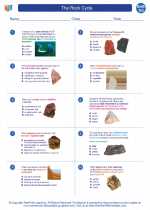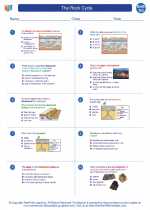Orbital Period
The orbital period is the time it takes for a celestial body to complete one orbit around another object. This concept is commonly applied to the motion of planets around the Sun, moons around planets, and artificial satellites around the Earth. The orbital period is determined by the balance between the gravitational force pulling the objects together and the centripetal force driving the objects in a circular or elliptical path.
Factors Affecting Orbital Period
The orbital period of an object depends on its distance from the object around which it orbits and the mass of that object. The formula to calculate the orbital period is:
T = 2π√(a^3/GM)
Where:
- T = orbital period
- π = mathematical constant (pi)
- a = semi-major axis of the orbit
- G = gravitational constant
- M = mass of the central body
Study Guide
To understand the concept of orbital period, it's important to focus on the following key points:
- Definition of Orbital Period: Understand what the orbital period represents and how it is measured.
- Derivation of Orbital Period Formula: Learn how the formula for orbital period is derived and the significance of each variable involved.
- Factors Influencing Orbital Period: Explore how the distance between objects and their masses affect the orbital period.
- Real-life Examples: Study the orbital periods of planets, moons, and artificial satellites in our solar system to see how the concept applies in practice.
- Calculations: Practice using the orbital period formula to calculate the orbital periods of different celestial bodies.
By mastering these aspects, you'll develop a comprehensive understanding of orbital period and its significance in celestial mechanics.
[Orbital Period] Related Worksheets and Study Guides:
.◂Earth Science Worksheets and Study Guides High School. The Rock Cycle

 Worksheet/Answer key
Worksheet/Answer key
 Worksheet/Answer key
Worksheet/Answer key
 Worksheet/Answer key
Worksheet/Answer key
 Vocabulary/Answer key
Vocabulary/Answer key
 Vocabulary/Answer key
Vocabulary/Answer key
 Vocabulary/Answer key
Vocabulary/Answer key
